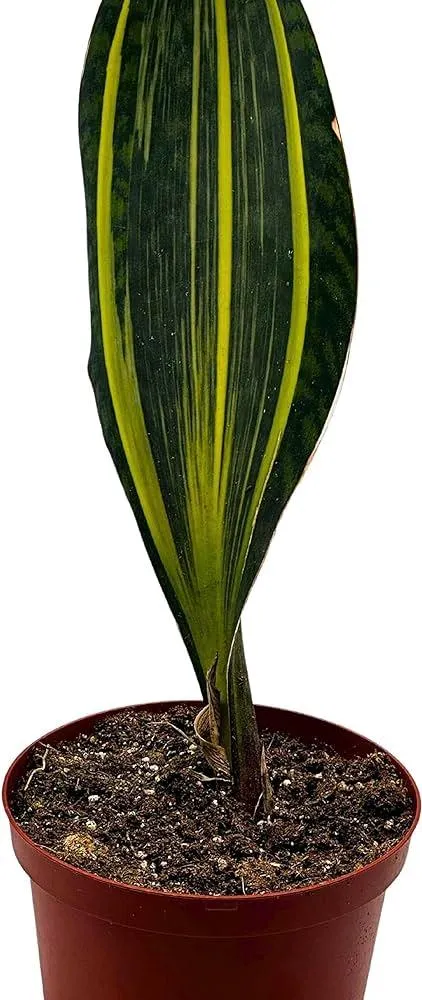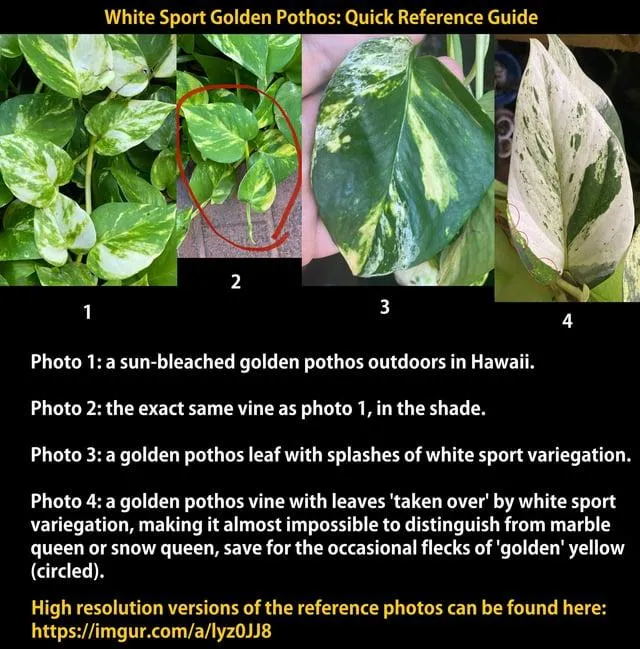A Comprehensive Guide to Making Your Plants Variegated
Have you ever walked by someone’s home and been awestruck by their beautiful variegated plants? The splash of white or yellow against green foliage is truly stunning. Maybe you’re thinking “I want to variegate my plants too!” Well friend, you’ve come to the right place. In this article, I’ll cover everything you need to know to create variegated plants of your own.
What is Plant Variegation?
To start, let’s define what variegation actually is. Basically, variegation is when a plant develops two or more different colors in its leaves, stems or flowers. The most common type is green-and-white variegation, but yellow, pink and cream colors can appear too. This different coloring happens because of a genetic mutation that causes some plant cells to lose their ability to produce chlorophyll. Without this green pigment, other colors like white become visible instead. Neat, right?
Variegation Methods: Sport vs Chimera
There are two main types of variegation you’ll come across – sport variegation and chimera variegation. A sport variegation is caused by a single cell mutation, so only a branch or section shows the new variegated pattern. Chimera variegation means the entire plant contains both pigmented and unpigmented cell lines throughout. This makes the variegation more stable since it’s in all new growth. The technique you use depends on the type of variegation you want.
Propagating Variegation Through Cuttings
- Select a visibly variegated branch or stem from the mother plant.
- Cut the stem right below a leaf node using clean, sharp pruners.
- Remove the bottom leaves so only 3-4 sets remain at the top.
- Dip the cut end in rooting hormone powder to encourage root growth.
- Plant the stem in potting soil, keeping the soil moist until roots form.
- Once established, your new plant should display the variegation of the original cutting.
This method relies on a sport variegation being present to reproduce it asexually. Kind of like how you can “propagate” the mutation. Give your cuttings sunlight and they should varie-grow for you in no time!
Variegating Through Tissue Culture
A more technical method is plant tissue culture. This allows you to potentially “engineer” variegation that wasn’t initially present. The basic process involves:

- Sterilizing and culturing small leaf or stem explants in a nutrient gel.
- Isolating individual plant cells or groups of cells called calluses.
- Inducing the calluses to form complete plantlets through plant growth hormones.
- Some plantlets may spontaneously mutate and produce variegated patterns.
- Rooting the variegated plantlets and transplanting them to soil.
Tissue culture success takes practice, but it expands your variegation possibilities beyond relying on mutations alone. Just be ready for messy clean-up after your home “lab” experiments!
Grafting: The Sure-Fire Method
Tired of waiting around for chances? Grafting is the surest fire way to introduce variegation yourself. Here’s a quick overview:
- Select rootstock – a plant variety suited for grafting, usually same species as scion.
- Prepare scion wood – a visible variegated branch you want to propagate.
- Use grafting tape or clamps to securely bind scion to rootstock where stems meet.
- New growth above graftunion should come from scion and display variegation pattern.
- Over time, the variegation may appear further down the plant as it’s nourished by roots.
Grafting lets you engineer plant variegation from the start. It takes some dexterity but yields predictable results. And hey, it gives you bragging rights as the mad scientist who “created” that beauty!
Maintaining Variegation
Once established, variegated plants still need TLC. Their mutation means weaker chloroplasts, so they can’t compete as well as all-green counterparts. To keep the variegation showin’, give plants:
- Bright, indirect sunlight – avoid shade which encourages reversion to green
- Well-draining soil – dry spells stress plants into losing variegation
- Fertilizer – their metabolism is busy so supplement nutrients
- Pruning – remove any all-green reversions regularly
- Propagation – take cuttings sooner than later before changes set in
With care, your variegated beauties will stick around for seasons of eye-catching foliage. Just don’t slack on those diva plants, okay?

Common Variegated Plant Varieties
Finally, here are some popular choices to try variegating yourself:
Explore what catches your eye and have fun becoming a plant variegation virtuoso! With experimentation you can achieve awesome mutated masterpieces of your own.
Well folks, I hope this mega guide has covered pretty much everything you need to know to get into plant variegation, like, majorly in-depth. Feel free to reach out if you have any other questions. I’ve basically seen and done it all in my plant-obsessed life. Now go forth and varie-create your greenest dreams! Toodles for now.
How to Choose a Variegated Plant
| Plant | Light Requirements | Care Instructions |
|---|---|---|
| Chinese Evergreens | Bright, indirect light | Water when top inch of soil is dry. Fertilize in spring and summer. |
| Peperomia | Bright, indirect light | Water when top inch of soil is dry. Propagate by leaf or stem cuttings. |
| Marble Queen Pothos | Bright, indirect light | Water when top inch of soil is dry. Propagate by stem or leaf cuttings. |
| Zebra Plant | Bright, indirect light | Water when top inch of soil is dry. Prune to maintain shape. |
| Variegated Wandering Jew | Bright, indirect light | Water when top inch of soil is dry. Propagate by stem cuttings. |
FAQ
-
How can I make plants variegated?
There are a few different ways to make plants variegated. One method is to get a variegated plant and propagate cuttings from it. Another is to subject normal green plants to certain stresses like light exposure or genetics which may cause variegation.
-
What causes variegation in plants?
The main causes of variegation are genetic mutations or stresses like too much light. Genetic mutations result in sectors of the plant producing less or no chlorophyll. Stresses during growth can also trigger variegation as the plant’s genes respond in odd ways. Variegation lets some plant tissues survive stresses that may kill other parts.

-
Do all plant varieties variegate the same way?
No, not quite. Different plant types have their own methods for developing variegated patterns. For leafy houseplants, splotches or striped patterns are common. For flowering plants, buds or blooms might show up in unusual colors. Some woody shrubs get portioned sections of green and white bark. So how variegation appears largely mirrors the plant’s basic structures.
-
How long does it take for variegation to show up?
The timing varies considerably. With propagated cuttings from a parent variegated plant, unique stripy leaves may emerge right away. But inducing variegation through stresses generally requires patience. It may take months or even years of growth for patterns to stabilize enough to be identifiable. During this period, variegation may come and go between generations of new growth. Perseverance helps stable traits eventually develop.
-
Is variegated foliage less healthy than solid green leaves?
In some cases yes, variegated sections producing little chlorophyll may be weaker. However, variegation itself does not necessary translate to bad health. Many variegated types including banana, bleeding heart and spider plant thrive for decades. Their patterns have developed through genes protecting weaker areas. While getting less sun energy, variegated plants have also adapted to need less. Their decorativeness makes up for tiny vigor reductions.
-
What other plant features besides leaves can show variegation?
While leaf variegation tends to stand out the most, various plant structures can showcase intriguing patterns. Flowers of coreopsis or coleus may appear in contrasting hues. Hydrangea blooms or orange daylily foliage provide stunning seasonal palettes. Variegated grass plumes also offer unique landscape pops. Bark such as ladyfinger banana’s vertical stripes provides year-round diminutive drama. Even rootball margins have shown rare albino breakouts. Amazingly, variegation refuses to limit itself.
-
Should variegated plants be kept in full sun once established?
It depends on the individual plant variety. While green foliage loves direct sunshine, lighter sections on variegated plants may burn or bleach in too much exposure. As a general guideline, keep new growth shaded for a few weeks until leaves harden. Then gradually introduce morning or afternoon sun. Monitor leaf conditions closely – if pale areas look dry or crispy, cut back on sun hours. Overcast weather provides perfect growing conditions. With careful acclimation, most variegated kinds can adapt to some sun as their unique patterns require less solar energy.

